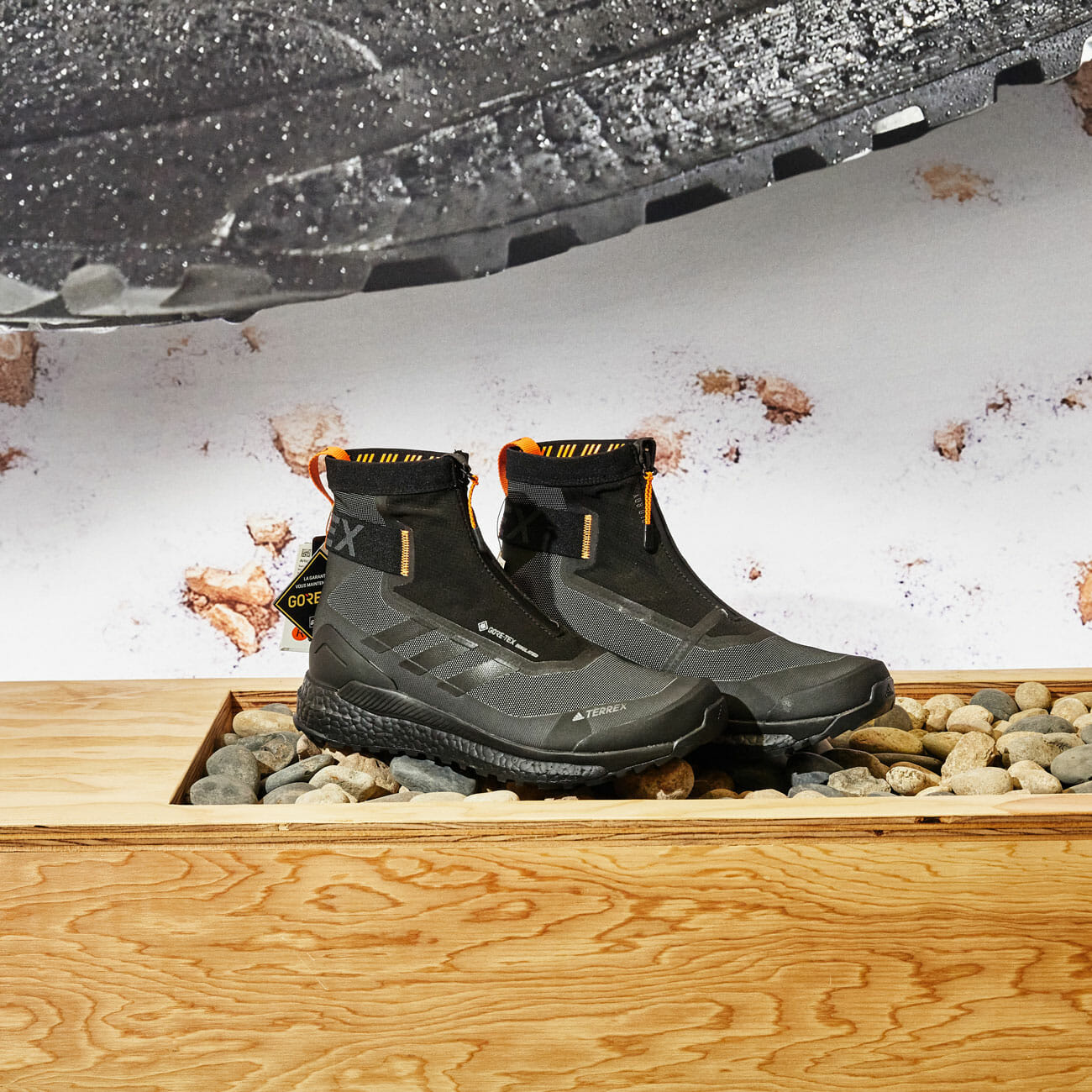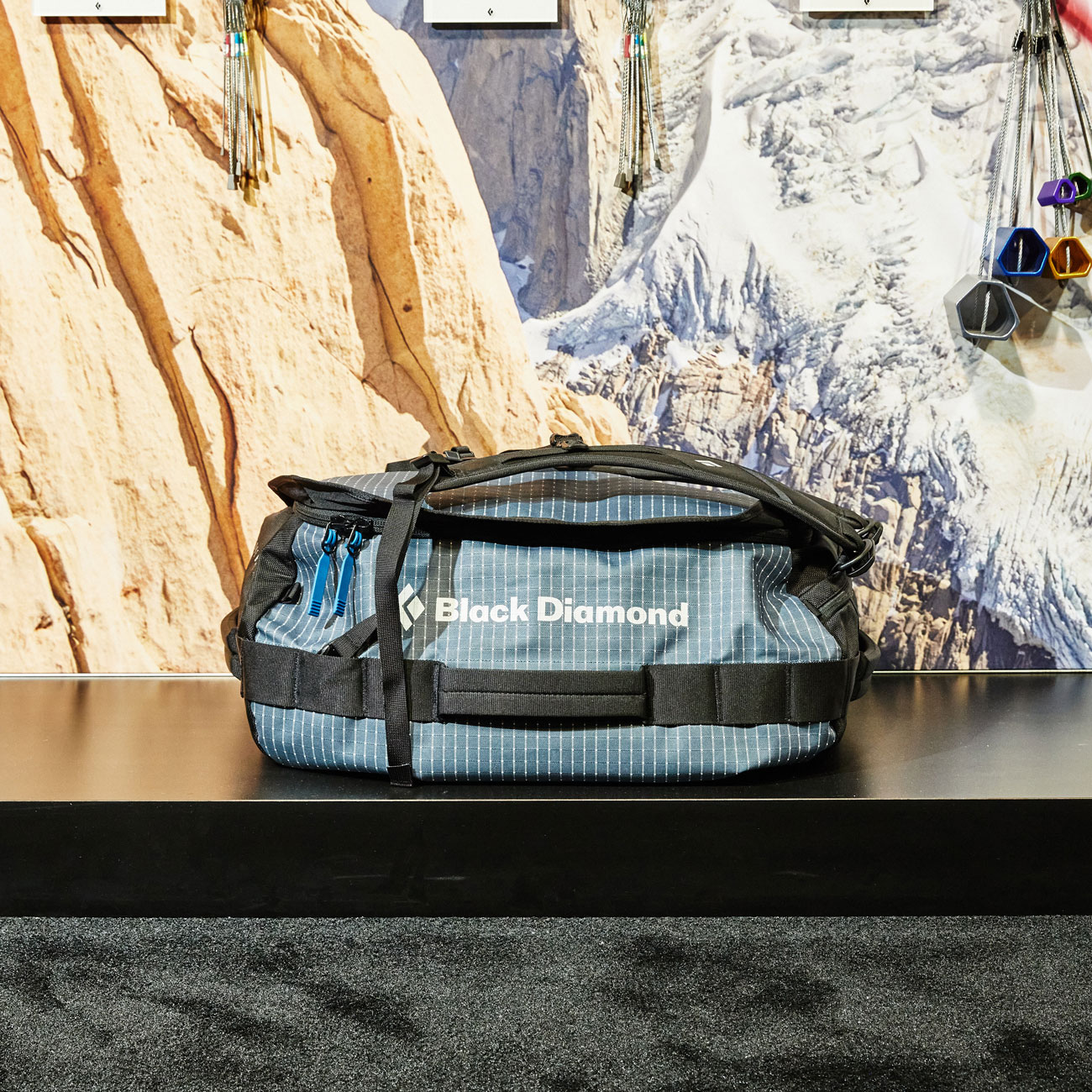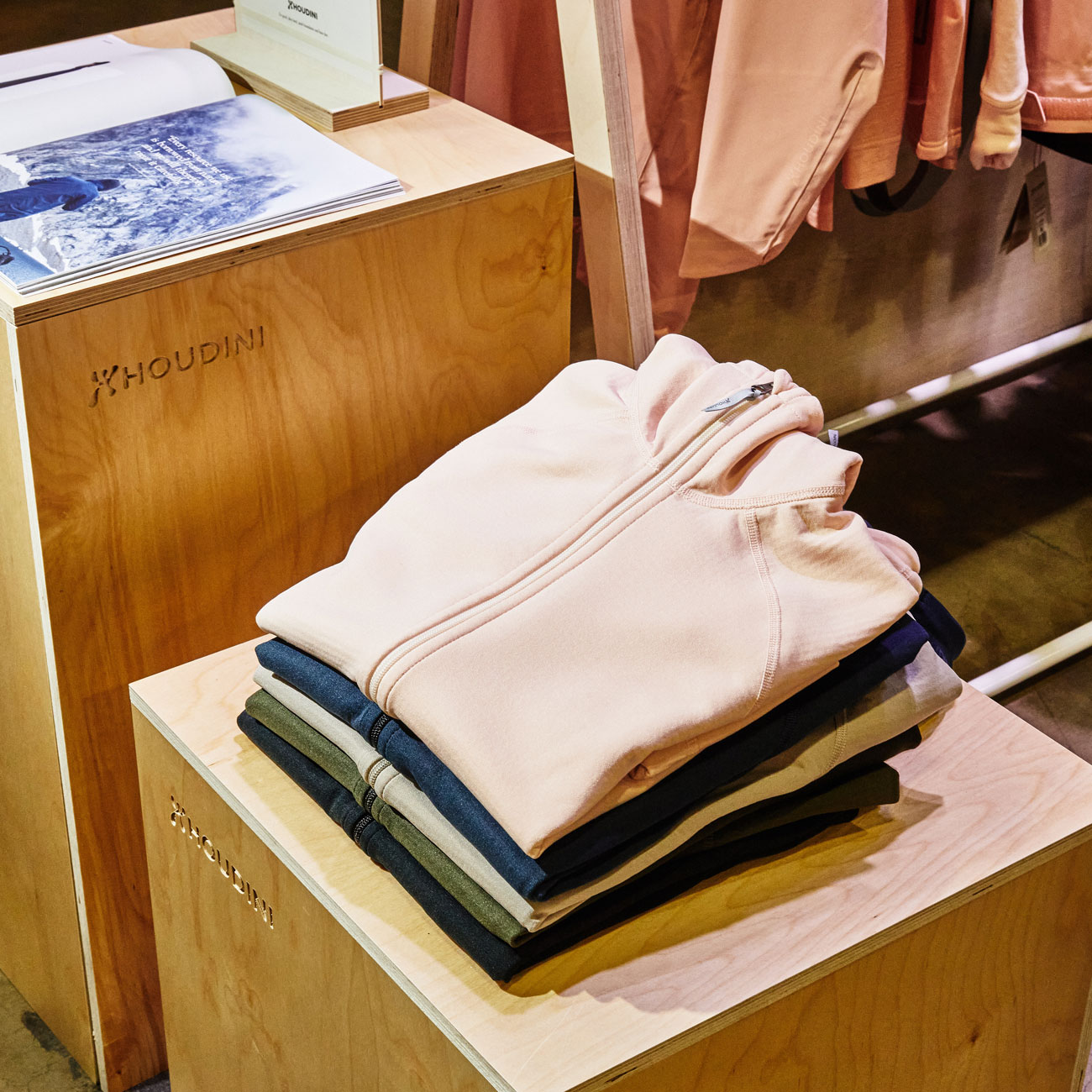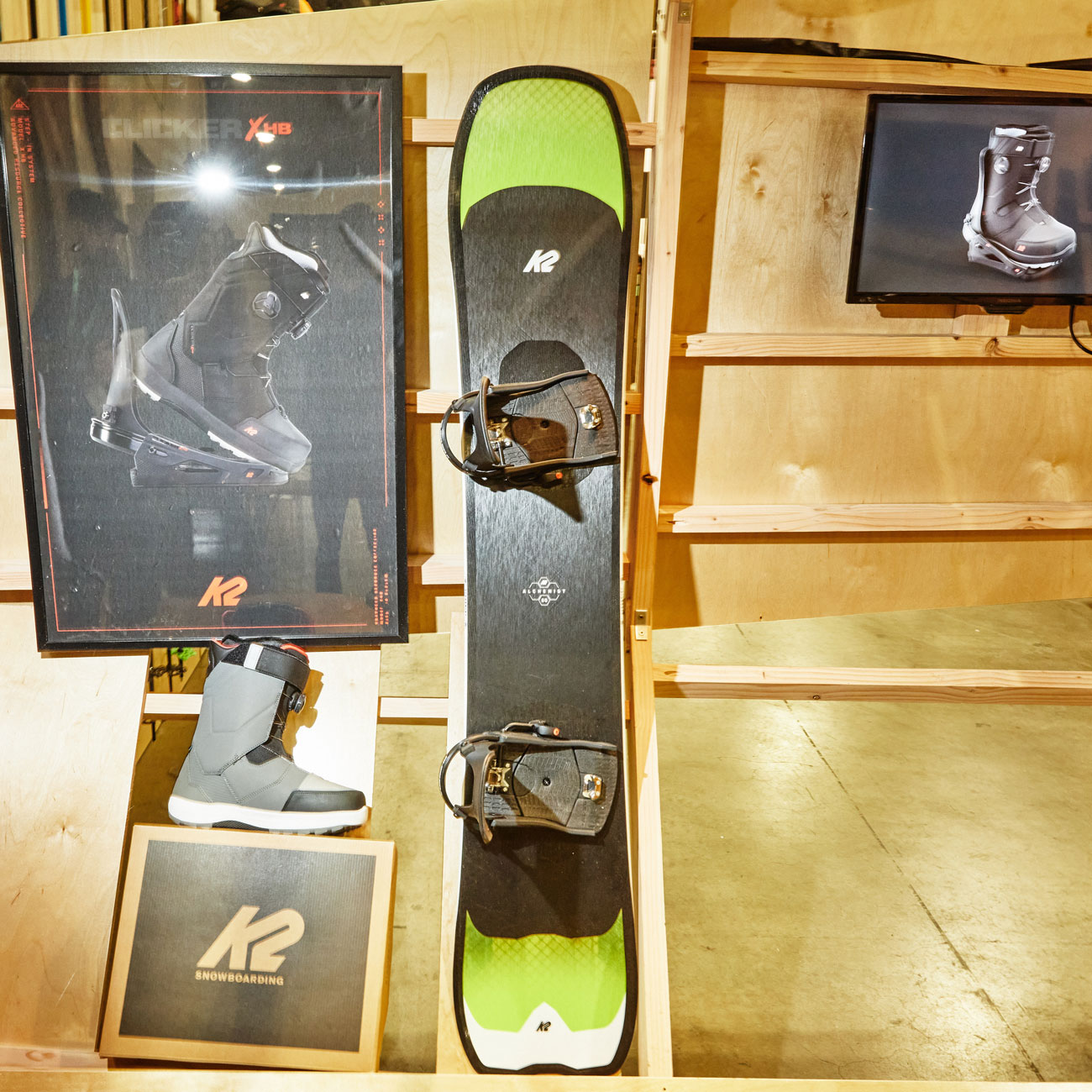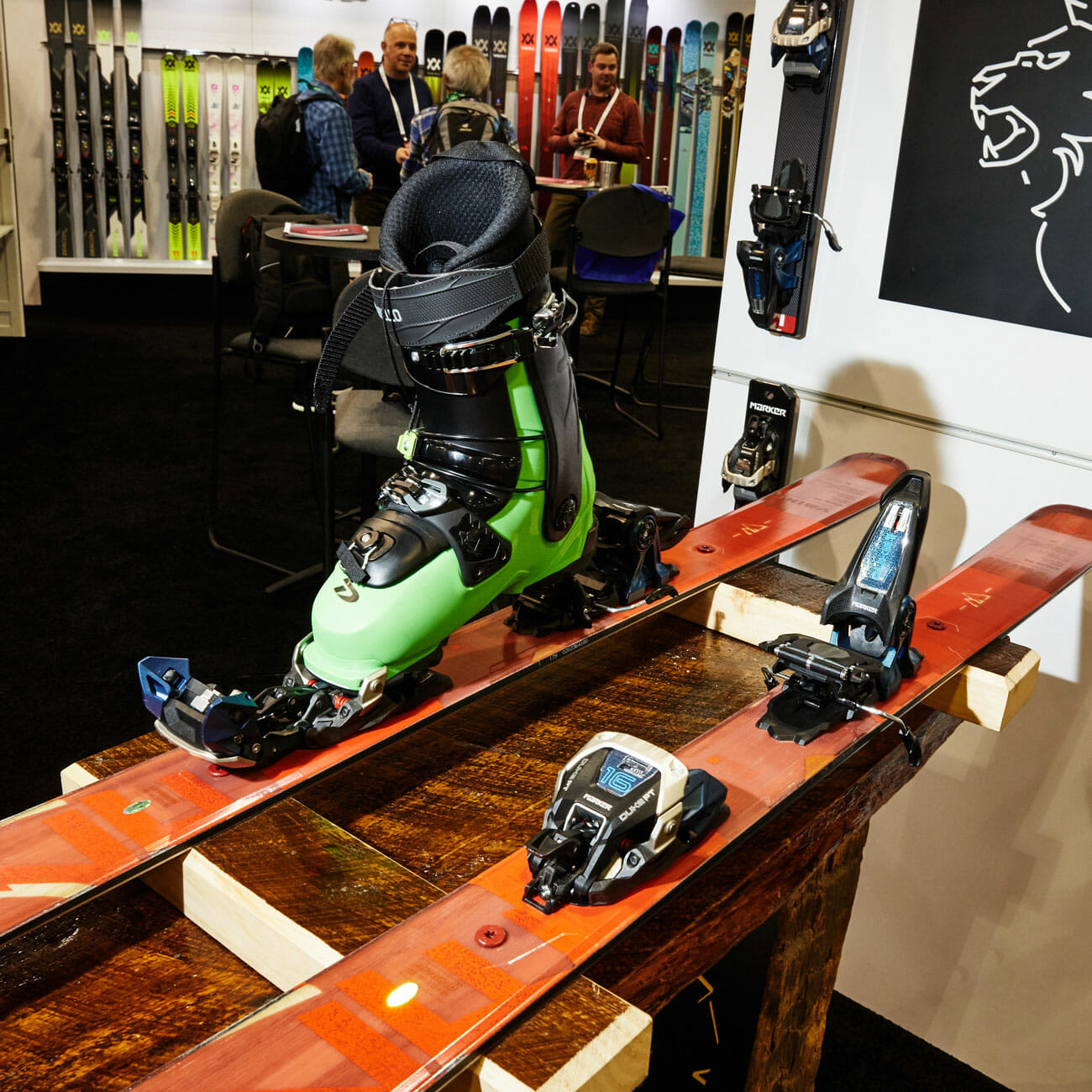What Snowboarding’s Latest Innovation Means For Skiers
When I got invited to North America’s first indoor ski complex, New Jersey’s Big Snow American Dream, a couple months back to check out the latest iteration of Burton’s Step On bindings, I was beyond stoked. Not only would I be among the first people to shred the facility, but also I would get to test a product I’d been deeply curious about since its launch a couple years ago. Could it possibly be the time-saving game-changer of my dreams? Only one way to find out.
And you can ease off the edge of your seat now, because spoiler alert: Step-Ons totally work. Burton rarely introduces products that don’t, and the brand clearly put a lot of R&D into creating a system that functions pretty seamlessly — and is pretty easy to explain.
First you’ve got a boot featuring three grippy outcroppings, one at the back and two at the front. Press down firmly into a high-backed binding outfitted with complimentary clasps at those three connection points, and you are instantly clicked in — more securely, Burton’s engineers assure me, then you would be with traditional straps.
Once you get to the bottom of a run, pull a little lever to release your back foot, and you’re ready for your next lift ride. It takes a little practice, but once you get the hang, you just might find yourself ruined for all other bindings.
And yet, lapping Big Snow with a bunch of other snowboarding media, I quickly started to take the tech for granted. So much so that I almost got lulled into thinking that this innovation was no big deal. Like I hadn’t spent what amounts to hours of my life on mountains all across the world, messing with straps instead of riding. Even though I taught myself how to strap in standing up — in a bout of a laziness several years back — it still takes time.

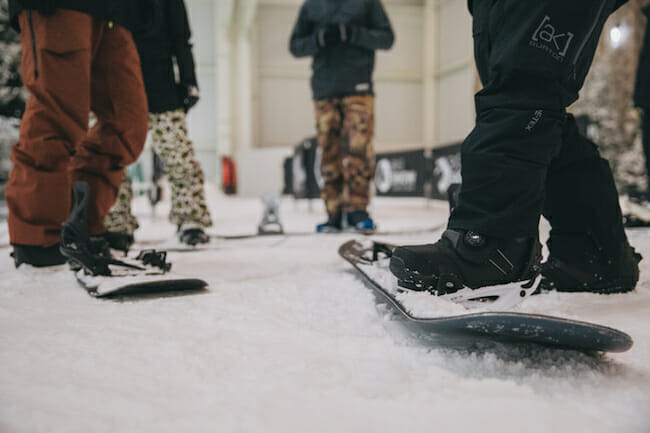
How much time? That’s something I only came to appreciate when I headed up to Vermont’s Mount Snow a month later.
With skiers.
See, as much as I hate to admit it, skiers are the real victim of snowboarding’s traditional binding systems. Along with the bitter resentment they feel every time we boarders stroll into the bar for après ski without a thought of ditching our cushy boots, skiers are also the ones feeling the minutes tick away whenever they come off the lift in a mixed group. Already clicked into their skis, they’re ready and raring to descend, only to look back at us one-plankers still fumbling with our straps.
Until now.
“Holy crap, you are so much faster,” my skiing buddy Rich raved when I asked him what he thought of the Step-Ons. “It’s almost like you’re on skis.”
Of course, such a comment is utter madness. But it’s also the strongest possible testament to how game-changing these bindings really can be.
Cruising Mount Snow, I spotted a few other riders rocking Step-Ons, but this revolution has yet to fully overtake the boarding world, probably because it takes some faith — and coin. The boots and bindings only work in concert, and the cheapest Step-On bundle is $550. That price is not exorbitant, but it’s enough to give many riders pause.

And yet, it’s clear Burton is on to something. As I noted last month, a German brand called CLEW just won an ISPO award for its own take on a revolutionary binding. And just a couple weeks ago, at the Outdoor Retailer Snow Show, I got a chance to play around with K2’s Clicker x HB binding (pictured above), which combines the Clicker tech the brand developed years ago with a highback to give boarders the level of control they want and the convenience they crave.
For the record, other brands have peddled their own easy-in, easy-out systems over the years: most notable among them is probably Flow Bindings, with its unique rear-entry approach. But considering that Burton has more than 30 percent of the snowboard market share and K2 Snowboards (plus its sister Ride) holds over 10 percent, we’re now looking at the makings of a movement.
Which means more brands will try to replicate the tech, and prices will eventually come down. Heck, in a few years, traditional bindings may be as rare a sight around the mountain as skinny skis or cambered boards.
Snowboarders’ — and skiers’ — lives may never be the same.
Second photo by Jesse Dawson. Third photo courtesy of K2.




